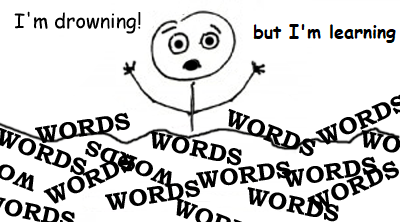Tip 1 for language learners and a BUT … (text)

This is the first tip of six, so strap yourself in for a few helpful ideas.
After 27 years as a language learner, and the same time as a language professor, I figure I have enough learning techniques and experience under my belt to write an article on some of the most effective ways to learn a foreign language. Before you get too excited, it would be irresponsible to allude to the idea that I have the ‘secret answer’ to language learning. I have some answers, but, unfortunately, some of you may not be happy with them. As a heads up, I have included the BUTs in each respective tip…you know, just to be honest.
I began learning Spanish in 1992 with a private tutor, before landing in Chile where I was thrown into the deep end. I was literally drowning in Spanish from the moment I got off the plane in South America. I travelled for two months and continued to have classes in Chile and Bolivia, developing as I practiced everyday with locals. My Spanish improved at lightening speed.
Tip number 1: daily practice in context is a great way to learn. BUT it was really hard. I had to use my dictionary quite often and the speech patterns that the locals used differed from city to city. What I learnt in one place was not necessarily useful in another. This was great for my vocab, but I often felt like my progress was really slow.
The sheer overload of language (i.e. phonetics, vocabulary, colloquialisms, grammar etc.) was overwhelming at times. But after a while, it all seemed to sink in at once. My fluency developed really fast once I got over the load of input.
In Tip 2, I move on to the idea of connections…